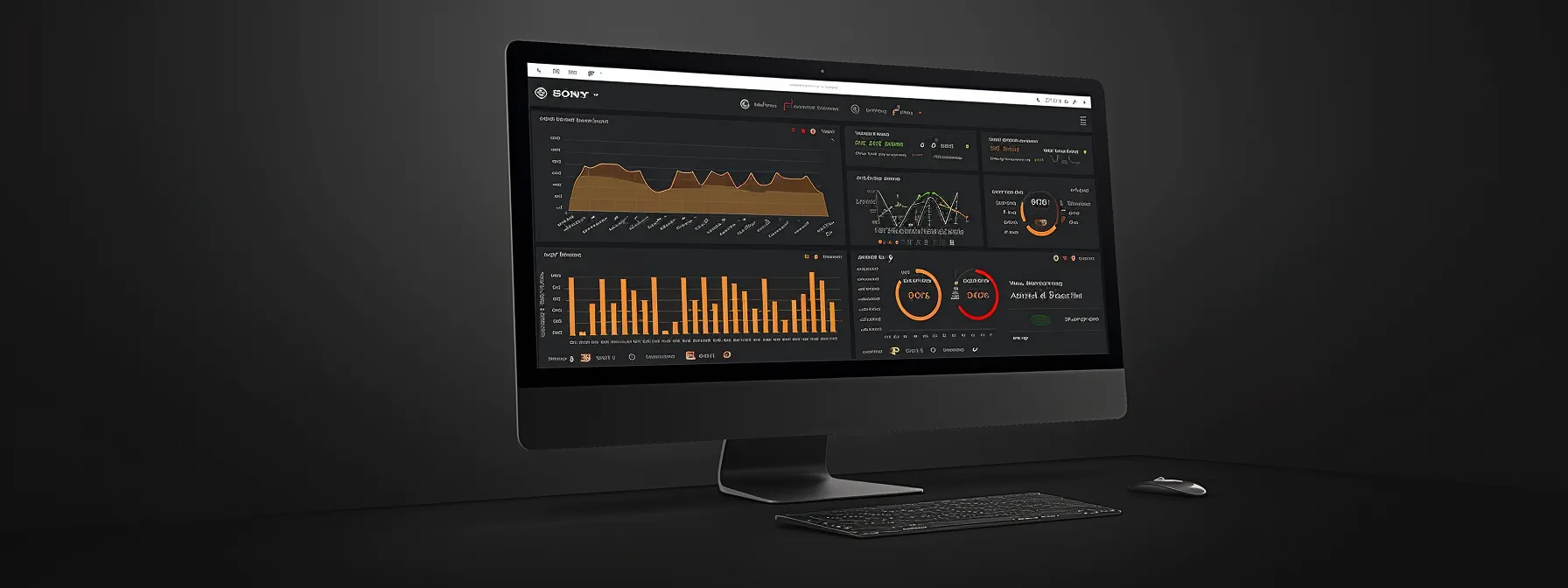Optimizing Security in Business Intelligence Platforms Through Cybersecurity Integration
Businesses that merge cutting-edge cybersecurity with their Business Intelligence (BI) platforms see notable gains in revenue and data management efficiency. This post sheds light on key strategies for fortifying BI ecosystems through state-of-the-art security measures. Readers will learn how to assess vulnerabilities within current systems and integrate robust cybersecurity tools seamlessly. For firms grappling with data breaches and compromised analytics, these insights are indispensable for safeguarding their data and maintaining a competitive edge.
Key Takeaways
- Robust cybersecurity is crucial to safeguarding business intelligence data integrity and customer trust
- Regular risk assessments and compliance checks are central to maintaining BI systems’ security
- Advanced authentication methods and encryption standards are vital for protecting sensitive BI data
- The emergence of quantum computing necessitates the development of quantum-resistant cybersecurity measures
- Zero Trust models and predictive cybersecurity enhance protection against evolving cyber threats
Understanding the Importance of Security in Business Intelligence Platforms

In the landscape of modern business, an interface that neglects security measures in business intelligence software can deplete productivity and inflate a company’s budget with unexpected costs. Data breaches not only derail operations but also erode customer trust, showcasing the pivotal role Cybersecurity plays in safeguarding sensitive information. This section delves into the risks of inadequate security protocols, the far-reaching impacts of data breaches on businesses, and how integrating robust cybersecurity strategies can fortify your business intelligence platform.
The Risks of Ignoring Security Measures
Disregarding security measures in the realm of business intelligence can lead to dire consequences. A lapse in protecting data within systems such as SQL databases or BigQuery can interrupt essential workflows, causing significant downtime and financial strain. Moreover, without rigorous cybersecurity defenses, sensitive information becomes susceptible to unauthorized access, compromising the integrity of business analytics.
In an era where data is a cornerstone of decision-making, the permeation of vulnerabilities can swiftly escalate from system exploitation to widespread corporate crisis. Entities that overlook the integration of advanced security in their analytical platforms may face not just data loss but also the potential forfeiture of their competitive stance in the market, underscoring the critical necessity of cybersecurity vigilance.
How Data Breaches Impact Businesses
Data breaches in a business setting can send shockwaves throughout the entirety of an organization, undermining the painstakingly curated analytics that inform critical business decisions. When platforms like Microsoft Power BI or Cognos fall victim to cyber threats, the resulting exposure of analytical data not only impacts strategic insights but also leads to a loss of customer confidence and potential legal ramifications, emphasizing the necessity for robust API security measures.
The ripple effects of compromised visual analytics due to inadequate cybersecurity can translate into substantial financial setbacks, regulatory scrutiny, and damaged reputations for businesses. As such, entities employing analytics tools must prioritize the integration of advanced security protocols to reinforce their defenses, ensuring the confidentiality, integrity, and availability of their business intelligence data remain intact.
The Role of Cybersecurity in Protecting Sensitive Information
In an ecosystem where predictive analytics and artificial intelligence are reshaping the future of industries, the role of cybersecurity in shielding sensitive information becomes paramount. Entities leveraging platforms like Salesforce for customer relationship management and other forms of business intelligence must secure their data against malicious threats. By doing so, they prevent sensitive intelligence from falling into the wrong hands, affirming the confidentiality essential to competitive advantage.
Within cloud computing ecosystems, where data often traverses multiple networks and services, an integrated cybersecurity strategy is no longer optional; it’s compulsory. Implementation of stringent security protocols cushions the foundational layers of business intelligence, preserving the integrity and reliability of data, which is especially crucial when it comes to actionable insights derived from complex analytics.
- Understanding the vital role of cybersecurity in protecting sensitive data within business intelligence platforms.
- Acknowledging that Salesforce and similar platforms require robust data protection measures.
- Strengthening cloud computing practices with continuous implementation of advanced security protocols.
The Intersection of Business Intelligence and Cybersecurity

For modern businesses, the integration of cybersecurity within business intelligence platforms is not just beneficial; it’s imperative. Managing the complexity of merging BI tools such as Tableau software, Microsoft Excel, Qlik, and IBM Cognos Analytics with robust cybersecurity measures presents a unique challenge. Yet, the union of these two disciplines offers substantial protection for data. This confluence enhances usability and strengthens defenses, securing vital business data against increasingly sophisticated cyber threats.
Why Integration Is Essential for Modern Businesses
Seamless integration of cybersecurity within business intelligence systems is now a fundamental requirement for modern enterprises. The interconnection of dashboards from platforms like Sisense or Google Analytics with comprehensive cybersecurity protocols ensures that data integrity is not compromised. As businesses rely on real-time insights from BusinessObjects for strategic decision-making, the security of these BI tools becomes essential to the ongoing success and operational security of the company.
For instance, when a dashboard reveals critical performance metrics, the underlying security must be potent enough to repel any data breaches that could skew or leak such sensitive insights. By harmonizing cybersecurity measures with BI platforms, businesses shield their data ecosystems against unauthorized access, thereby safeguarding the reliability of analyses provided by tools like Sisense, Google Analytics, or other advanced BI applications. This holistic approach to information security underpins the resilience of a company’s data strategy, fostering trust among stakeholders and clients alike.
Challenges in Merging BI Platforms With Cybersecurity
Merging cybersecurity with business intelligence platforms presents complexities, particularly when integrating secure protocols with databases and systems like Microsoft SQL Server, often used within enterprise resource planning. The challenge lies in creating a seamless shield that not only safeguards against unauthorized access and data mining but also maintains the fluidity necessary for efficient customer relationship management.
The intricacies increase when data protection measures must align with the sophisticated analytics of business intelligence tools without hindering performance. Organizations face the task of striking a balance between robust cybersecurity defenses and the agile and comprehensive insights essential for data-driven decision-making, ensuring the integrity and utility of their enterprise data remain uncompromised.
Benefits of a Unified Approach to Data Protection
A unified approach to data protection in the context of business intelligence platforms fundamentally amplifies the security of embedded analytics. When organizations synchronize their cybersecurity measures with their Business Intelligence (BI) frameworks, they benefit from enhanced protection against invasive cyber threats—a consequence especially relevant for BI tools integrated with databases such as MySQL and PostgreSQL.
This consolidation of security practices and BI systems, including those hosted on Amazon Web Services, streamlines the analysis of sensitive data while bolstering defense mechanisms. The advantage is twofold: ensuring that the integrity and confidentiality of data are preserved, and simultaneously fostering a secured environment for embedded analytics to thrive.
- Amplifying security in embedded analytics through unified cybersecurity and BI platform integration.
- Streamlining analysis and fortifying defenses in BI tools on platforms such as Amazon Web Services, MySQL, and PostgreSQL.
Assessing Vulnerabilities in Current BI Systems

Identifying and mitigating common security flaws in business intelligence (BI) platforms is essential for robust data security. Entities must be vigilant in identifying potential threats and attack vectors during data preparation, including stages involving Python scripts for data cleansing. Thorough evaluation of an organization’s risk profile is imperative, considering platforms like ThoughtSpot, which facilitate data discovery. This evaluation helps in understanding vulnerabilities and preparing a defense strategy tailored to the organization’s specific needs.
Common Security Flaws in BI Platforms
Common security flaws in BI platforms often stem from unsecured user interfaces and inadequate access controls, leaving sensitive business software open to exploitation. Organizations using platforms such as Google Cloud Platform and Looker need to be especially vigilant; failure to meticulously audit and secure every layer can result in unauthorized data breaches, compromising the organization’s strategic assets.
Inadequate encryption practices further expose business intelligence systems to cyber risks, jeopardizing the integrity of an organization’s data. It’s essential for businesses to implement rigorous encryption standards across all touchpoints, including data in transit and at rest, to protect against intrusions—and this is particularly critical in user interfaces that interact with Google Cloud Platform, Looker, and other sophisticated business software tools.
Identifying Potential Threats and Attack Vectors
Within the complex data architectures of today’s enterprises, the data warehouse serves as a repository for large volumes of structured and unstructured data. Identifying threats and attack vectors in these systems begins with careful scrutiny of data management and the robustness of the data model implemented. Insufficiently secured data warehouses can swiftly become a target for cyber adversaries, who may exploit lax management protocols or inadequacies in processing unstructured data, leading to data corruption or loss.
The advent of augmented analytics has deepened value extraction from data, yet, it has also elevated the importance of securing data against novel cyber threats. Business intelligence tools must evolve to anticipate and thwart potential breaches by implementing agile and comprehensive security measures. Organizations must be proactive in protecting against external and internal threats, ensuring the integrity and trustworthiness of business-critical information.
- Examine data warehousing security to thwart exploitation of structured and unstructured data management processes.
- Upgrade augmented analytics platforms with dynamic cybersecurity measures to counteract emerging cyber threats.
- Enforce vigorous data model protocols and monitor for internal and external vulnerabilities.
Evaluating Your Organization’s Risk Profile
Evaluating an organization’s risk profile begins with understanding the intricate relationships between various business intelligence components, including machine learning algorithms and natural language processing tools, and their role in enhancing the customer experience. A thorough analysis considers how users engage with the BI platform, such as through drag and drop features, and the data security implications of such interactions. Identifying potential vulnerabilities within these user-oriented capabilities allows for a more strategic approach to cybersecurity integration.
Organizations must prioritize continuous risk assessment, particularly as they incorporate advanced machine learning models that refine business forecasts and natural language processing that simplifies user interactions. This proactive stance empowers businesses to anticipate cyber threats and tailor their security postures to protect the valuable insights that drive customer experience improvements:
- Conduct in-depth assessments of machine learning pathways and user interfaces to identify weak points.
- Regularly update and tighten security measures based on the evolving ways in which user interactions occur within the BI system.
- Enhance natural language processing channels with strong encryption to prevent data leaks during user engagement.
Strategies for Integrating Cybersecurity Into BI Platforms

In the intersection of data science and cybersecurity, safeguarding business intelligence platforms is paramount. Implementing advanced authentication methods ensures robust user verification processes, while data encryption techniques provide a necessary layer of protection. Furthermore, regular security audits and compliance checks affirm that servers comply with the latest regulations. These strategies form the bedrock of a resilient data analytics framework, accommodating the complexities of language interpretation and automation within tools like SAS.
Implementing Advanced Authentication Methods
As businesses increasingly rely on software as a service (SaaS) for their business intelligence (BI) needs, the significance of implementing advanced authentication methods intensifies. These methods safeguard access to mobile apps and technology platforms, mitigating the risk of data breaches. By adopting multi-factor authentication (MFA), enterprises establish a secure defense for their BI tools, limiting access to authenticated users and underpinning robust data governance protocols.
Effective data governance is reinforced when spreadsheet access incorporates modern authentication technologies. One-time passwords (OTPs), biometric verification, and security tokens create additional layers of protection, ensuring that only authorized personnel can access and manipulate sensitive BI data. Employing these advanced authentication methods within mobile apps and web services not only fortifies overall technology security but also enhances user accountability and data integrity.
Data Encryption Techniques for Enhanced Security
In the dynamic arena of data analysis, incorporating data encryption techniques is not just about bolstering security; it’s instrumental in ensuring scalability and sustainability of business intelligence (BI) systems. Encryption acts as an essential shield, safeguarding sensitive information during transit and at rest, thus playing a crucial role in maintaining the confidentiality and integrity of intelligence used for learning and forecasting. Organizations must adopt encryption standards that are resilient against evolving cyber threats to protect their valuable BI assets.
Encryption extends beyond merely encoding data; it enhances the trustworthiness of BI platforms, providing a secure foundation for the extraction and interpretation of actionable insights. As enterprises strive to comprehend large data sets for strategic advantage, the implementation of robust encryption protocols assures stakeholders that the security measures in place evolve in tandem with the sophistication of the analytics. This commitment to strong encryption practices reinforces the overall security posture, demonstrating a dedication to safeguarding the enterprise’s intelligence and foresight capabilities.
Regular Security Audits and Compliance Checks
Conducting regular security audits and compliance checks is a cornerstone of cybersecurity, vital to maintaining the accessibility of Business Intelligence (BI) platforms. These audits provide an in-depth review of the security infrastructure, ensuring that user access remains secure and that collaborative engagement across platforms is protected from unwarranted intrusion. They stand as a testament to the organization’s commitment to data protection and operational integrity.
During these audits, experts examine the flow of information, assess how data is charted, and review knowledge management protocols to identify potential vulnerabilities. The findings guide improvements in machine learning algorithms and other automated processes, reinforcing the system’s defenses against cyber threats. Regular compliance checks also confirm that security measures align with current legal standards, an essential factor in maintaining trust and collaboration with partners and clients:
Leveraging AI and Machine Learning for Security Optimization

Integrating artificial intelligence and machine learning into business intelligence platforms elevates cybersecurity to new heights. AI’s ability to detect anomalies in BI data provides a preemptive approach to identifying irregularities, while machine learning models contribute to predictive security, foreseeing potential breaches. Additionally, automating threat response mechanisms ensures swift and effective action against cyber threats, incorporating statistics, cyfe, research, and visualization tools from providers like IBM for optimized security management.
How AI Can Detect Anomalies in BI Data
Within the intricate warehouse of business intelligence data, artificial intelligence (AI) serves as a relentless guardian. AI systems, adept at sifting through vast lakes of data, excel in detecting anomalies that deviate from established patterns. By continuously monitoring for irregularities, the AI safeguard deployed across infrastructure, including platforms like Microsoft Azure, prevails in the early detection of potential security threats, ensuring the sanctity of web analytics.
The application of machine learning algorithms in the exploration of BI data enhances the robustness of cybersecurity. These algorithms learn from historical and real-time data streams, adapting to recognize and flag unexpected patterns or outliers. This proactive approach to anomaly detection streamlines the protection of business intelligence assets, expediting response times when irregularities arise, thus reinforcing the integrity of the analytics infrastructure.
Machine Learning Models for Predictive Security
Machine learning models are revolutionizing predictive security by analyzing patterns and anomalies in raw data. By mining through the depths of structured and unstructured data, these advanced algorithms equip platforms like MicroStrategy with the foresight needed to anticipate and thwart cyber threats, enhancing the security experience for businesses.
Incorporating graph analysis, machine learning transforms seemingly disparate data points into a cohesive narrative, enabling businesses to visualize complex relationships and predict future security incidents. This proactive stance on security not only secures data but also enriches the decision-making process, providing a competitive edge in data-driven strategies.
Automating Threat Response Mechanisms
Automated threat response mechanisms are the linchpin of a fortified security posture within business intelligence platforms, acting as the catalyst to rapid defensive actions. These systems, underpinned by advanced machine learning, enhance the user experience through quick identification and response to threats, assuring uninterrupted data sharing and the protection of proprietary software. This intelligent automation, built into the security framework of a BI platform, streamlines data transformation processes by neutralizing threats almost instantaneously, maintaining the system’s integrity and performance.
Equipping a business intelligence system with the capability for automated threat response not only minimizes the potential for damage but also informs future prediction models. As these systems learn from each interaction, they refine their capacity for threat detection, contributing a proactive layer to cybersecurity strategies. Such dynamic responses to cyber threats bolster confidence in the platform’s security among users, positioning the company as a reliable guardian of their sensitive data.
Best Practices for Secure BI Platform Deployment

Deploying a business intelligence platform with security at the forefront requires establishing robust access controls, secure configuration, and ongoing maintenance protocols. It is imperative to build a well-informed workforce through employee training and awareness programs. Integration of data quality management ensures that customer data handled by SQL Server or analyzed through Qlik Sense is thoroughly protected. These practices form a secure foundation for data virtualization and the handling of sensitive business intelligence.
Establishing Robust Access Controls
Securing a business intelligence tool such as Zoho Analytics begins with establishing robust access controls which are essential to maintaining the integrity of sensitive data and insights. By enforcing strong user authentication and authorization protocols, businesses can ensure that only verified personnel have the ability to interact with and manipulate the data within their business intelligence platforms.
Integrating role-based access control (RBAC) systems within a business intelligence strategy can precisely regulate user permissions, thus minimizing the risk of unauthorized data exposure. This method allows business to granularly define roles and responsibilities, ensuring that access to critical insights remains aligned with organizational hierarchy and privacy requirements.
Secure Configuration and Maintenance Protocols
In the configuration of an enterprise business intelligence platform, it is essential to adhere to secure settings that protect against unauthorized access and data leaks. Initiatives like encrypting data storage and network communications within the Google Cloud or Cognos Analytics environments are fundamental components of a secure BI system. By regularly updating these configurations in line with evolving security standards and threats, organizations maintain the resiliency of their business analytics tools against cyber vulnerabilities.
Maintenance protocols for systems such as SAS Viya require a consistent and proactive approach to safeguard against potential security breaches. Routine audits and patch management ensure that the underlying infrastructure supporting the BI platform remains impenetrable to cyber threats. Actively monitoring for anomalies and promptly addressing discovered vulnerabilities are critical tactics in preserving the integrity of enterprise business intelligence solutions:
- Routine audits to identify and rectify security gaps in the BI infrastructure.
- Patch management to ensure all components are running the latest secure versions.
- Active monitoring for rapid detection and response to potential security incidents.
Employee Training and Awareness Programs
Effective employee training and awareness programs are essential for businesses that utilize tools like SAP Analytics Cloud or Zoho for data visualization and business intelligence. These training initiatives must clearly communicate the relationship between individual employee actions and the security of the business intelligence platform, ensuring that all team members comprehend their critical role in cybersecurity efforts.
By equipping the workforce with the necessary knowledge to identify and prevent security threats within business intelligence tools, companies create a robust front-line defense. Regularly updated training content that covers the latest trends in cybersecurity threats and best practices can transform the user base into a well-informed shield against potential cyber-attacks, safeguarding a company’s data visualization capabilities and the integrity of its business intelligence platform.
Case Studies of Successful Cybersecurity Integration

Within the realm of business intelligence, companies continually strive to optimize their analytics platform, recognizing that robust cybersecurity is non-negotiable. Company A exemplifies this commitment by enhancing security with real-time monitoring, leveraging the best BI tools for heightened situational awareness. Conversely, Company B harnesses the power of AI to reduce data breach incidents, innovating bi reporting tools for predictive threat detection. Key takeaways from these industry leaders demonstrate actionable insights and strategies, from the utilization of free BI tools to comprehensive solutions like the Domo BI tool—all integral to the journey of cybersecurity integration.
Company A: Enhancing Security With Real-Time Monitoring
Company A recognized the emergent need for robust security in their business intelligence platforms and addressed it by deploying real-time monitoring tools. By comparing top BI tools and consulting the Gartner Magic Quadrant for BI, they implemented a solution that seamlessly integrated with their AWS BI system, providing constant surveillance against potential cyber threats and vulnerabilities.
This proactive approach allowed them to not just monitor, but also rapidly respond to threats, significantly enhancing their Microsoft BI tools’ security framework. The deployment of real-time monitoring led to a strengthened defense mechanism, positioning Company A as a model of cybersecurity excellence within the BI tools comparison landscape.
Company B: Reducing Data Breach Incidents Through AI
Company B, operating in cloud-based business intelligence, adopted artificial intelligence to strengthen its security posture and diminish the frequency of data breaches. This integration advanced their capability to remain ahead of the curve, as AI-powered systems consistently evolved to detect and neutralize threats, maintaining privacy for the end user and integrity across the supply chain.
The deployment of AI in Company B’s security strategy not only mitigated risks but also streamlined regulatory compliance, automating the identification of potential non-conformance and expediting corrective measures. This proactive approach protected the company’s data assets and strengthened trust among partners and clients who depend on their commitment to advanced cybersecurity measures.
Key Takeaways From Industry Leaders
Industry leaders have demonstrated that a proactive approach to integrating cybersecurity within business intelligence platforms significantly elevates data exploration security. By employing strategies that encompass continuous software development and iterative improvements, organizations like SAP and Spotfire have not only advanced their functional capabilities but also created a secure environment for business data operations. This establishes a benchmark for others in the sector, driving home the necessity of prioritizing security in every phase of business intelligence workflows.
In the domain of data analytics, where sensitive information is a prime target for malicious exploits, companies have learned the value of incorporating hardened security practices as a core aspect of their software development process. This commitment translates to more than just protecting assets; it fosters a culture of trust and reliability, which is paramount for tools developed by SAP and applications such as Spotfire, granting peace of mind to users and laying a solid foundation for secure function and exploration of business intelligence data.
Regulatory Compliance and Legal Considerations

Ensuring the security of business intelligence platforms is not only a technological requirement but also a legal one. Understanding and adhering to regulations such as GDPR and HIPAA is critical for businesses utilizing BI tools like SPSS. Integrating security measures within BI architecture, including features like anomaly detection through a web portal, helps in meeting compliance requirements. Non-compliance carries significant risks for businesses, impacting both their financial standing and reputation. This section examines the intricate fabric of regulatory compliance and the importance of a security-first approach in BI platform design.
Understanding GDPR, HIPAA, and Other Regulations
Understanding the intricacies of regulations such as the General Data Protection Regulation (GDPR) and the Health Insurance Portability and Accountability Act (HIPAA) is crucial for businesses employing text mining and other data analysis techniques within their Business Intelligence (BI) systems. Compliance with these regulations requires stringent access control measures and enhanced visibility into how data is collected, processed, and stored, particularly with the integration of Internet of Things (IoT) devices that further complicate the data landscape.
Incorporating these regulatory standards is not only about adherence but also about instilling confidence in the platform’s users. For instance, GDPR mandates transparent data handling practices and grants individuals significant control over their personal information, while HIPAA safeguards protected health information, necessitating robust protection mechanisms across BI tools. Ensuring compliance helps in mitigating legal risks and fortifies the organization’s reputation for data governance:
- Acknowledge the requisite for strict data access controls to conform to legal standards.
- Employ clear data management policies to maintain visibility and compliance in BI operations.
- Integrate secure IoT practices to uphold data integrity in complex, interconnected BI systems.
Meeting Compliance Requirements With Integrated Security
Seamlessly integrating cybersecurity into business intelligence platforms is foundational to meeting compliance requirements and safeguarding return on investment. A well-secured BI system not only protects the brand’s reputation but also cultivates customer success by ensuring that their sensitive data is handled with paramount care. Businesses can narrate a more compelling storytelling around their security posture through measures like fine-grained access controls, which act much like the precise data points on a bar chart, clearly delineating the boundaries of data access and user privileges.
Considering compliance as an integral component of cybersecurity strategy helps organizations to navigate the complex landscape of legal requirements effectively. By implementing integrated security measures, businesses are better equipped to maintain the confidentiality, integrity, and availability of critical data, thereby delivering a message of trust and reliability to their stakeholders. It’s this level of commitment to security that reinforces the brand’s dedication to customer success and shapes the positive story that unfolds from their investment in cybersecurity.
Consequences of Non-Compliance for Businesses
Non-compliance with regulatory frameworks in business intelligence platforms can result in dire legal repercussions, which may include hefty fines undermining the financial health of an organization. Beyond the immediate financial impact, failure to comply can sever the trust businesses hold as guardians of data, particularly when databases such as Redshift are used to handle complex, multilayered data sets intended to serve as a single source of truth.
Moreover, the intricate design elements that ensure a secure environment within business intelligence systems may be compromised due to non-compliance, exposing sensitive data to potential breaches. This lack of conformity introduces unnecessary complexity to maintaining data integrity, ultimately affecting the reliability of the data set and endangering the company’s reputation as a secure and trustworthy business intelligence provider.
Future Trends in BI Security Integration

As the digital frontier expands, emerging trends in business intelligence security signal a transformative phase. The Rise of Zero Trust Security Models reshapes access paradigms, demanding relentless verification to protect networks and assets. Meanwhile, the Impact of Quantum Computing on Data Security offers both breakthrough potential and new challenges to encryption norms. Preparing for Emerging Cyber Threats entails a proactive stance, adapting to unforeseen risks with agility. Together, these developments catalyze the evolution of cybersecurity as an indispensable resource in the virtualization of business operations, with feedback loops and a robust knowledge base enhancing Microsoft Office and other platforms’ defenses.
The Rise of Zero Trust Security Models
The implementation of Zero Trust security models is becoming critical within business intelligence platforms, particularly those handling big data and employing advanced analytics tools like Power BI and SAP HANA. By necessitating continuous verification at every data transaction point, these models help ensure that only authenticated and authorized users gain access to the relational database systems that store sensitive business information.
This paradigm shift is indispensable as companies embrace the multitude of external vendors and remote employees contacting their systems, challenging traditional perimeter-based defenses. Integrating Zero Trust frameworks within Power BI tools and similar platforms grants visibility and control, mitigating risks of cyber threats and data breaches amid evolving IT landscapes.
Impact of Quantum Computing on Data Security
The advent of quantum computing poses significant challenges and opportunities for cybersecurity within business intelligence platforms. The computational power of quantum machines introduces a scenario where traditional encryption can be compromised swiftly, mandating a reevaluation of current data protection methodologies. For Kraft Business Systems, which provides comprehensive office equipment solutions, the inclusion of quantum-resistant encryption becomes not just a value proposition but a critical component of their cybersecurity offerings.
Understanding and preparing for the impact of quantum computing on data security is imperative for safeguarding sensitive information. This preparation entails crafting quantum-resistant algorithms to protect both existing systems and future office equipment. As Kraft Business Systems continues to serve as a responsive resource in office technology solutions, integrating quantum-proof cybersecurity measures will bolster the defenses of their clients’ business intelligence infrastructure against emerging quantum threats:
Preparing for Emerging Cyber Threats
As businesses plan for security in a rapidly evolving technological landscape, preparing for emerging cyber threats becomes a mission-critical endeavor. Companies must anticipate and adapt to novel security challenges, employing advanced threat intelligence and behavioral analytics to identify and mitigate risks preemptively. The shift towards predictive cybersecurity measures in business intelligence platforms involves analyzing patterns and anomalies to craft strategic defenses against sophisticated threats that could otherwise compromise data integrity and business continuity.
Kraft Business Systems, a leader in cybersecurity and managed IT services, understands that robust protection against emergent cyber threats involves more than static defenses. It involves the agile integration of security updates and the application of rigorous risk management protocols throughout the business intelligence lifecycle. This approach ensures that clients who rely on sophisticated office technology solutions experience seamless security, guarding against the disruptive impact of new cyber threats on operations and preserving their competitive edge in the market.
Steps to Begin Integrating Cybersecurity Into Your BI Platform

Embarking on the integration of cybersecurity within business intelligence (BI) platforms requires a strategic approach, beginning with a comprehensive Security Needs Assessment. This initial step enables businesses to pinpoint specific security requirements. Subsequently, Choosing the Right Cybersecurity Tools becomes essential to address identified needs effectively. Finally, Developing an Implementation Roadmap guides the systematic application of security measures, ensuring a deliberate and measured enhancement of the BI platform’s security posture.
Conducting a Security Needs Assessment
Conducting a Security Needs Assessment is a critical first step in fortifying the cybersecurity framework of a Business Intelligence (BI) platform. This process involves a thorough analysis of the current system to identify any vulnerabilities that could be exploited by malicious entities, informing subsequent reinforcement strategies. Focusing on areas such as access control, data encryption, and network security, the assessment forms the bedrock for developing a comprehensive cybersecurity plan attuned to the unique intricacies of the BI environment.
During the assessment phase, stakeholders must scrutinize their BI systems, including third-party integrations and user permission settings, to establish a clear picture of the platform’s risk profile. Understanding the specific security challenges—ranging from internal threats to external breaches—allows for the tailored implementation of protocols and defenses. By proactively identifying these potential vulnerabilities, businesses not only enhance their BI platform’s security but also reinforce their overall data strategy against a spectrum of cyber threats.
Choosing the Right Cybersecurity Tools
Selecting the right cybersecurity tools for integration into a business intelligence (BI) platform requires careful evaluation of both the platform’s specific needs and the tools’ efficacy. It’s essential for organizations to choose solutions that not only align with their BI technology stack but also offer scalability to adapt as security threats evolve and business requirements change. Such tools should effectively mitigate risks, ensuring the continuous protection of sensitive data and business analytics processes.
In this strategic process, businesses must give precedence to tools that promise seamless integration, without compromising the speed and usability of the BI system. These tools ideally come equipped with features like real-time threat detection, automated incident response, and comprehensive data encryption capabilities. The goal is to create a secure ecosystem where cybersecurity assets reinforce the robustness of business intelligence functionalities, instilling confidence in data-driven decision-making.
Developing an Implementation Roadmap
Developing an implementation roadmap is a strategic move that charts the path for integrating cybersecurity measures within a Business Intelligence (BI) platform. It starts with setting clear milestones and timelines that align with both cybersecurity goals and the organization’s broader objectives. Such a structured plan ensures that each phase of the cybersecurity enhancement is executed methodically, minimizing the risk of disruption to the BI services while bolstering security protocols.
Crucially, the roadmap must be flexible enough to accommodate adjustments as cybersecurity landscapes evolve and new threats emerge. An effective roadmap also involves collaboration across departments, ensuring that IT and security experts work in concert with the BI team to streamline the integration process. This collaborative approach fosters a holistic understanding of the platform’s security needs, leading to more resilient and adaptive cybersecurity solutions which secure critical data assets.
Frequently Asked Questions
How does cybersecurity enhance business intelligence platforms?
Cybersecurity fortifies business intelligence platforms by safeguarding sensitive data. Strengthened security measures prevent unauthorized access, ensuring data integrity and reliability for strategic decision-making.
Implementing robust cybersecurity protocols enhances user trust in business intelligence systems. This trust is crucial for seamless data exchange, fostering an environment where insights can thrive and drive innovation.
What methods identify vulnerabilities in BI systems?
Vulnerability assessment tools are employed in Business Intelligence (BI) systems to reveal security weaknesses. These tools scan the system, detect vulnerabilities, and suggest remedial actions, providing critical insights into the protection of sensitive data.
Penetration testing, or ethical hacking, is another pivotal strategy. This simulated cyberattack exposes vulnerabilities by targeting BI systems as a malicious hacker would, highlighting potential security gaps before they can be exploited by real threats.
Can AI improve BI platform cybersecurity?
Artificial intelligence can significantly bolster BI platform security by detecting anomalies and preventing unauthorized access. AI-driven cybersecurity solutions analyze data patterns to identify potential threats swiftly, ensuring robust protection against cyber-attacks.
Incorporating AI into cybersecurity for BI tools enhances data privacy and compliance. Through real-time monitoring and adaptive defense mechanisms, artificial intelligence offers businesses a proactive stance in safeguarding sensitive information on BI platforms.
What are key practices for secure BI deployment?
Ensuring secure Business Intelligence (BI) deployment requires implementing strong access controls. These include user authentication protocols, role-based access to data, and regular audits of permissions to safeguard sensitive information and restrict unauthorized access.
Furthermore, deploying encryption both for data at rest and in transit is crucial. Businesses should employ end-to-end encryption techniques and secure connection protocols such as HTTPS and SSL to protect data integrity and confidentiality during transmission and storage.
What legal aspects affect BI cybersecurity measures?
Compliance with data protection laws like GDPR and HIPAA is paramount for Business Intelligence (BI) cybersecurity. These regulations mandate stringent data handling and breach notification procedures to safeguard consumer information.
BI solutions must adhere to cybersecurity frameworks and standards like NIST, ensuring legal compliance and robust data defense mechanisms. Non-compliance could result in hefty fines and damage to an organization’s trust and credibility.
Conclusion
Optimizing security within Business Intelligence (BI) platforms through cybersecurity integration is crucial for safeguarding sensitive data and sustaining business continuity. Robust access controls, rigorous encryption, and proactive threat monitoring are fundamental to protecting against the financial, operational, and reputational damage caused by data breaches. As cyber threats evolve, especially with advancements like quantum computing, businesses must continuously adapt their security measures to maintain a strong defense. The integration of cybersecurity into BI systems not only ensures compliance with legal standards but also reinforces the trust stakeholders place in an organization’s data management capabilities.






